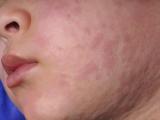Jun 24, 2011
Study: Anthrax vaccine does not raise risk of serious complications
US soldiers who received anthrax vaccine were not at increased risk for medical complications, according to the largest cohort study to date. Researchers from the US Army and the consulting firm ENVIRON reviewed disability data for 1,001,546 soldiers, of whom 439,059 (44%) had received at least one anthrax shot. After analyzing the data using stratified Cox proportional hazards and logistic regression models, they found no statistical difference in the odds of disability evaluation between vaccinated and unvaccinated soldiers. They write that their results mirror what has been reported in the past, but their study adds 3 years of data and almost 250,000 soldiers to the cohort. They conclude, "No consistent patterns or statistically significant differences in risk of disability evaluation, disability determination, or reason for disability were associated with anthrax vaccination." They noted a trend in the risk of disability among vaccinated personnel with 2 years of service or more who entered the military in 2000 or later but attributed this finding to a "healthy warrior effect," given that many of these newer soldiers were deployed and in good physical condition.
Jun 23 Vaccine abstract
WHO reports another 34 E coli cases with 2 deaths
An additional 34 cases of enterohemorrhagic Escherichia coli (EHEC), including 2 deaths, were reported yesterday in the epidemic centered in Germany, bringing the total to 3,836 cases with 45 deaths, according to the World Health Organization's (WHO's) European regional office. Today's increase was well below yesterday's jump of 105 cases. The latest numbers include 6 more cases of hemolytic uremic syndrome (HUS), with one death, and 28 more cases of EHEC without HUS, including one fatal. Twenty-nine of the 34 new cases were in Germany, which accounts for 3,717 of all cases. The outbreak peaked on May 22; the WHO says the continued increase in cases is mainly due to delays in reporting.
Jun 24 WHO update
Q fever cases reported in Montana, Washington, Michigan
Up to 14 cases of Q fever have been identified recently in three states, according to reports yesterday. Six people in Montana and 5 in Washington have confirmed or suspected cases of the disease, which probably spread from infected goats, according to a Reuters report published yesterday. Investigators in Washington have traced the outbreak to a goat herd in the central part of the state, leading to a quarantine of animals on two farms, the story said. Goats from one of the farms were sold to at least one livestock operator in Montana, where three human cases are confirmed and three more suspected. Alicia Anderson, a veterinarian with the US Centers for Disease Control and Prevention (CDC), said a probe of the outbreak suggests that the infected people inhaled bacteria in areas where barnyard dust was tainted with birthing material and feces from infected goats.
Jun 23 Reuters report
In Michigan, the state health department reported that three women in Livingston County contracted the disease by drinking raw milk obtained through a dairy herd share program, the Kalamazoo Gazette reported. One of the women needed prolonged hospitalization for Q fever meningitis, the story said. Q fever is caused by Coxiella burnetti, designated by the US government as a Category B bioterrorism agent and found mainly in cattle, sheep, and goats. Up to half of infected people have no symptoms, but the disease can cause a wide range of symptoms and leads to serious complications in some patients, according to the CDC.
Jun 23 Kalamazoo Gazette report
CDC information on Q fever
UK measles cases have already topped totals for all of 2010
Amid high levels of measles cases, the UK's Health Protection Agency (HPA) is urging parents to have their children vaccinated, according to BBC News today. England and Wales have seen 496 measles cases this year, compared with 274 for all of 2010. And although the UK rate of measles, mumps, and rubella (MMR) vaccine in 2-year-olds in the United Kingdom has reached 90%—the highest level in 13 years—the HPA warned that it still falls short of the recommended 95% for community protection. The country's rise in cases is part of a Europe-wide trend of increased cases. The HPA said cases are predominantly in those under 19 who have not been vaccinated. "Anyone who missed out on MMR as a child will continue to be at risk of measles, which explains why we are seeing these new cases in a broad age range," said Mary Ramsay, head of immunization at the HPA. In the United Kingdom, children receive their first dose of MMR around 1 year of age and the second about the time they start school.
Jun 24 BBC News story
Study says intradermal flu vaccine immunogenic at lower doses
US researchers have determined that 6- and 9-microgram (mcg) doses of Sanofi's Fluzone vaccine administered by the intradermal (ID) route with a new microinjection system produces a comparable immune response to a 15-mcg dose of intramuscular (IM) Fluzone. The ID version of Fluzone, which uses a tiny needle to deliver vaccine just under the skin rather than into the muscle as with the IM shot, was approved in the 9-mcg-dose form last month for use in the United States. In the study, 1,592 adult volunteers were divided into four groups: (1) standard 15-mcg IM, (2) 9-mcg ID dose, (3) 6-mcg ID dose, or (4) 3-mcg ID dose administered by Mantoux technique. The researchers then performed hemagglutination inhibition assays and obtained geometric mean titers (GMT) in all volunteers 21 days after vaccination. They found that, across all age-groups, both 6-mcg and 9-mcg doses produced GMTs "noninferior" to the IM vaccine but that only 1 of the 3 strains in the 3-mcg dose was noninferior to the IM vaccine. When they analyzed data for only the 50- to-64-year-old subgroup, however, immune response for the ID vaccine was inferior to that of the IM vaccine. They also wrote, "No significant safety issues related to intradermal administration were identified."
Jun 23 Vaccine abstract
May 10 CIDRAP News story on ID Fluzone approval
UK experts: Flu vaccine for all from 6 months to 5 years old
Two University of Oxford professors are advocating for universal influenza vaccination of all children 6 months to 5 years old to reduce the number of respiratory infections seen in general practitioners' (GPs') offices, according to the UK publication GP today. The country's current target groups for flu vaccine are those 65 and older and those 6 months and older who are in certain clinical risk groups because of underlying conditions. GP David Mant and epidemiologist Richard Mayon-White said that reduced GP consultations would offset the added workload of administering the vaccine. Less than one fourth of UK children 2 to 16 years old received the seasonal flu vaccine in 2008-09, and the rate in this group was also low in 2009-10, the article said. "Parental anxiety about the safety and effectiveness of vaccines in general should be addressed by an enhanced public education programme, supported by the media," the two wrote in the July issue of the British Journal of General Practice (BJGP), which is not open access.
Jun 24 GP article
BJGP home page


















